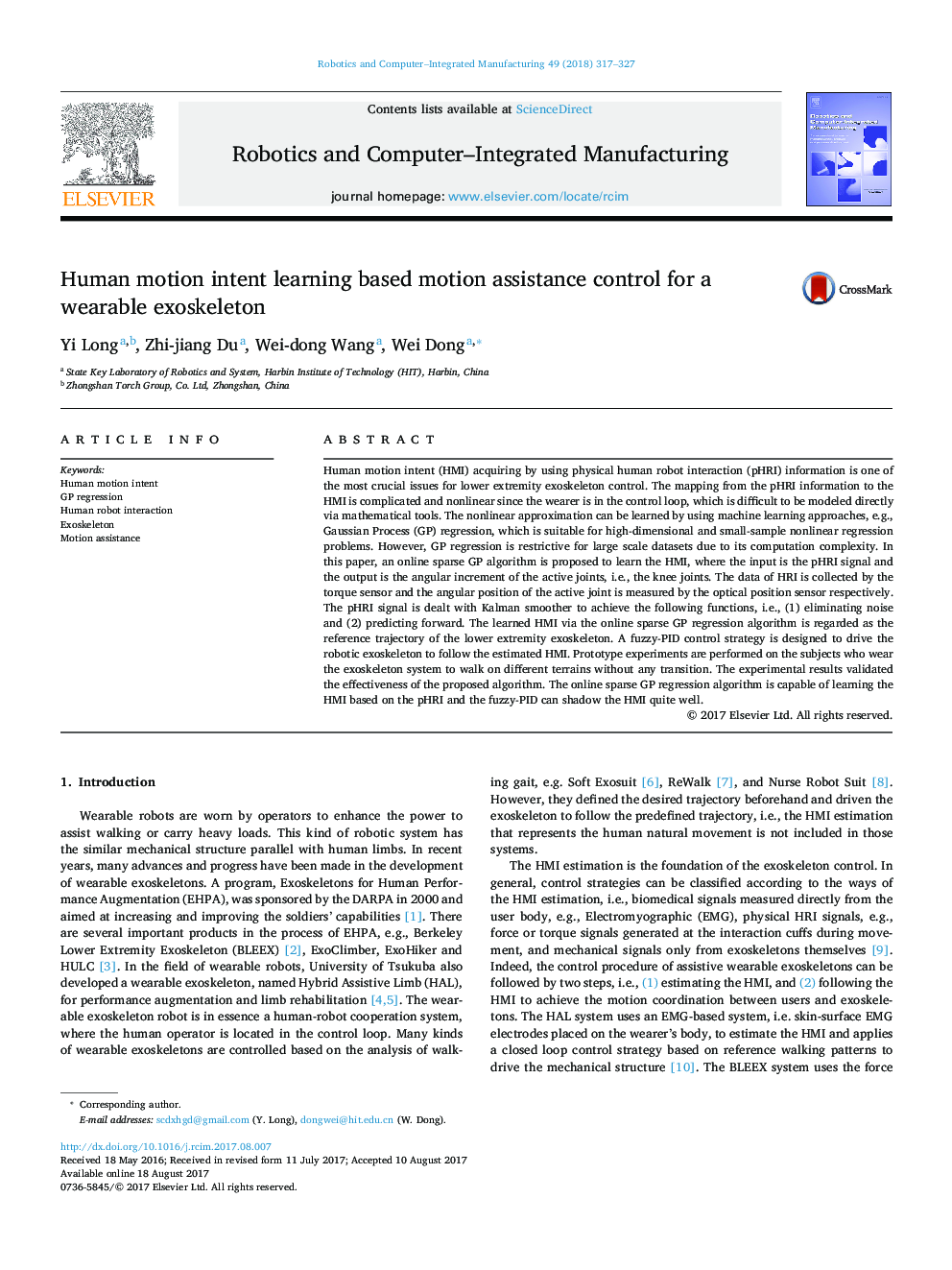| کد مقاله | کد نشریه | سال انتشار | مقاله انگلیسی | نسخه تمام متن |
|---|---|---|---|---|
| 4948954 | 1439928 | 2018 | 11 صفحه PDF | دانلود رایگان |
- The proposed online sparse GP algorithm is effective to approximate the HMI using the pHRI.
- GRA method is capable of constructing the final training dataset.
- Kalman smoother can eliminate noises meanwhile predict forward for the pHRI signal.
- Laboratory experiment is conducted to validate the effectiveness of the proposed method.
- The wearer wearing the robotic exoskeleton can walk on different terrains without any transition.
Human motion intent (HMI) acquiring by using physical human robot interaction (pHRI) information is one of the most crucial issues for lower extremity exoskeleton control. The mapping from the pHRI information to the HMI is complicated and nonlinear since the wearer is in the control loop, which is difficult to be modeled directly via mathematical tools. The nonlinear approximation can be learned by using machine learning approaches, e.g., Gaussian Process (GP) regression, which is suitable for high-dimensional and small-sample nonlinear regression problems. However, GP regression is restrictive for large scale datasets due to its computation complexity. In this paper, an online sparse GP algorithm is proposed to learn the HMI, where the input is the pHRI signal and the output is the angular increment of the active joints, i.e., the knee joints. The data of HRI is collected by the torque sensor and the angular position of the active joint is measured by the optical position sensor respectively. The pHRI signal is dealt with Kalman smoother to achieve the following functions, i.e., (1) eliminating noise and (2) predicting forward. The learned HMI via the online sparse GP regression algorithm is regarded as the reference trajectory of the lower extremity exoskeleton. A fuzzy-PID control strategy is designed to drive the robotic exoskeleton to follow the estimated HMI. Prototype experiments are performed on the subjects who wear the exoskeleton system to walk on different terrains without any transition. The experimental results validated the effectiveness of the proposed algorithm. The online sparse GP regression algorithm is capable of learning the HMI based on the pHRI and the fuzzy-PID can shadow the HMI quite well.
Journal: Robotics and Computer-Integrated Manufacturing - Volume 49, February 2018, Pages 317-327
